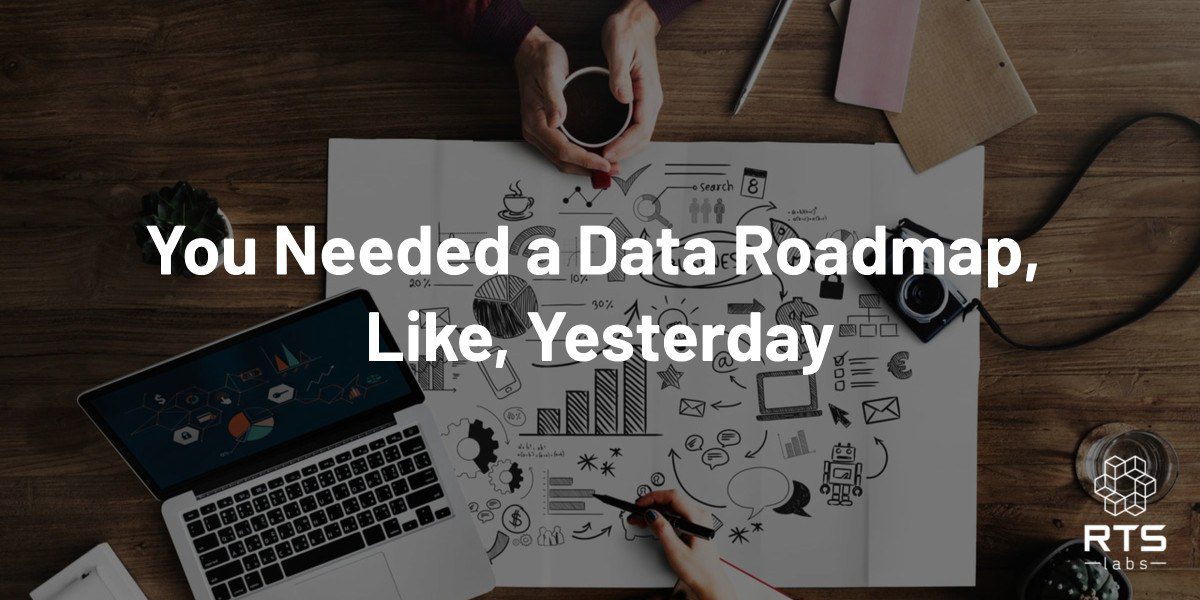You Needed a Data Roadmap, Like, Yesterday

Being nimble and agile as a company (especially in the technology world) is a great way to ensure innovation and collaboration. But nimble and agile should never describe your data strategy. Tech company or not, if you’ve got data, you’re flying by the seat of your pants (and probably getting nowhere) if you don’t have a data roadmap.
Creating a data roadmap that actually gets you somewhere
It is good to have goals, but if want to actually reach those goals, you need a solid plan for the curation, implementation, and handling of your data.
A strong data roadmap is designed to help you chart the path from data wrangling to data success. There’s a lot of important steps between those two things. Unless you’ve laid out that roadmap, you will never realize the amazing benefits a big data solution can bring.
Creating a data roadmap will:
- Help you define the objectives of your data program
- Identify business problems and solutions
- Assess resources and data gaps
- Lay out an implementation and execution plan
- Define how you will manage and improve the process in the future
Step 1 to creating a data roadmap: Define your business objectives
As habit #2 from the ever popular book The 7 Habits of Highly Effective People advises, begin with the end in mind.
Launching your new business intelligence or data analytics software and seeing what happens will get you nowhere. You need to define what success looks like first.
What are your goals? What business problems are you trying to solve? Without defining your objectives, how will you track your progress and know what success is supposed to look like?
Defining your objectives is the first step towards creating a data roadmap. Figure out where you are now. Figure out where you want to be. Then, fill in the steps that will get you from point A to point B.
Next on your data roadmap journey: Assess data resources and find gaps
Data is useless if it hasn’t been properly prepared to be used with business intelligence or data analytics tools. Your data roadmap should include an inventory of your company’s data sources and a plan for evaluating and interpreting your data.
Then, you’ll also need to look at your objectives to determine the type of data needed to meet them. Look to make sure there are no gaps between the data you’re collecting and the data you need to be successful.
If your data isn’t reporting-ready, you’ll need to create a data mart or data warehouse as part of your data roadmap.
Create an execution plan
Once you’ve defined your objectives and assessed your current data resources and gaps, you need an execution plan.
What steps need to be taken to get your data ready? Does a data mart or data warehouse need to be created? Does your data need to be prepared and transformed AKA formatted for your BI and data analytics tools? Do new data sets need to be extracted? What is the process for retrieving your data and creating effective reports that stakeholders can understand?
Your execution plan should answer these questions and lay out the exact steps that need to be taken in order to execute your data strategy.
Ensure user adoption of your data roadmap
Knowing how your data needs to be prepared is a big piece in creating your data roadmap. But implementation is just as essential. You need a foolproof plan for user adoption. Why? Because people don’t like change and don’t love learning new things.
Your employees will quickly go back to the old way of doing things if you don’t provide the proper training for how to use your new data solution, as well as the reasoning that drives it. Start by creating a full training plan that includes use cases and compelling reasons for them to adopt the new processes.
Take it a step further. Make sure they are set up for success with easy-to-use dashboards so their jobs actually become easier, not harder.
As part of your implementation plan, your roadmap should consider all the activities (daily, weekly, monthly, and quarterly) that are required to meet your objectives, as well as how each department will be affected.
Fine tuning your roadmap over time
As your business objectives and needs change over time, so should your data strategy. Your roadmap should have a plan that includes continuous improvement, quality assurance checks, and fine-tuning of business processes into the future.
This is just a high-level overview of what goes into a data roadmap and what you’ll get out of it if you do it right. Without goals, objectives and a plan of action, data is just data. It takes proper preparation and planning to transform that data into actionable insights before you can reap the benefits.
Does your organization have a clear data strategy and roadmap? We can help. Book a free data strategy session. Whether you work with us or not, you could gain some valuable insights just from starting the conversation.